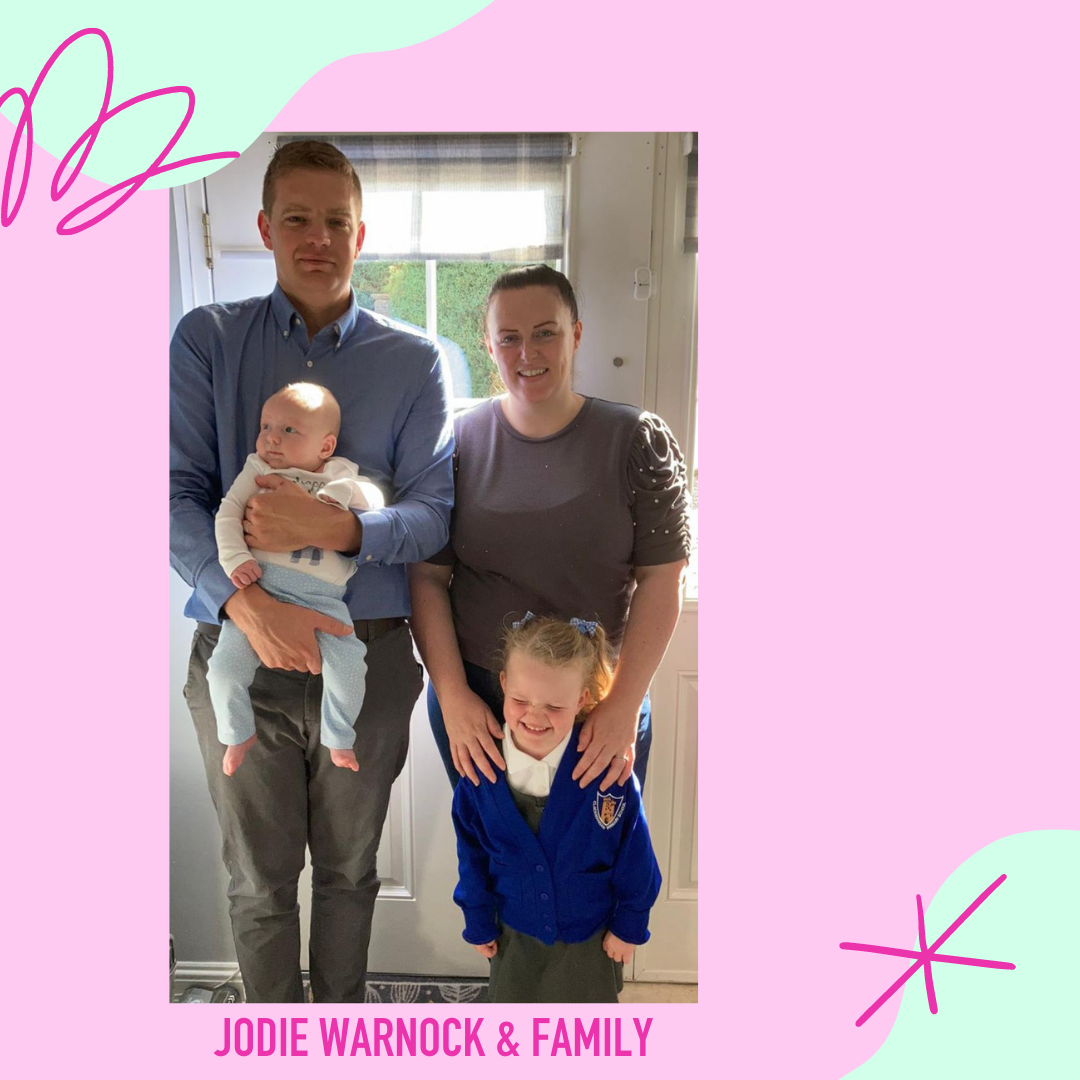Jodie’s Story
Jodie Warnock, 34, maths teacher and mother of two children (Isla and Campbell) shares her experience of requiring multiple blood, platelet and plasma transfusions after giving birth to her second child.
When I gave birth to my first child, Isla, I lost 1.1 litres of blood as my placenta ruptured during the delivery due to a short umbilical cord. The doctors and nurses thankfully managed to control the bleed and I narrowly missed needing a blood transfusion. I was monitored in the hospital for a few days after I gave birth before being allowed to go home and start raising my beautiful daughter. However, 10 days later, I didn't feel right and the doctors found that a large piece of placenta was remaining after I gave birth, so I had to go for surgery to get this removed.
With my second child, I was obviously worried that this might happen again but felt that the chance of this was low and that I would have to be really unlucky to experience something like this twice.
My second child, Campbell, was measuring to be quite big during my pregnancy, and the doctors and nurses were worried that his shoulders would be too large to give birth naturally if I went to full term, so I was induced a week early. The delivery was going well and was overall relatively quick; Campbell was a beautiful, healthy 9lb 5oz baby with a normal umbilical cord. However, once Campbell was delivered, my womb had stretched to a point where it could no longer contract. As a result, my placenta wouldn’t come out.
Retained placenta can have serious side effects. After your baby is born, your uterus contracts to pull the placenta away from the uterus wall lining so that it can be removed from your body. If this process doesn’t happen, it can cause sudden blood loss and life-threatening bleeding, which unfortunately is what started to happen to me.
Although my uterus had stopped contracting, the fantastic team at the Forth Valley Royal Hospital managed to get my placenta out quite quickly; however, I continued to bleed as my womb wasn’t closing as it should’ve been. At this point, I had lost 1.5 litres of blood in the labour ward and was rushed to theatre for surgery. During the surgery, I lost another 4.5 litres of blood and received five pints of transfused blood, as well as other fluids, plasma and platelets. Thankfully, the doctors managed to close my womb and stop the bleeding without having to remove it. I was taken to the intensive care unit to recover after my surgery, and once I was moved back to the labour ward the following day, I needed one more pint of blood to get my red blood cell levels back to normal.
As Campbell was born during the COVID-19 pandemic, and because the labour ward was so busy, I wanted to go home as soon as possible. I missed my little girl and it was really difficult looking after my baby alone at night in the ward after everything that had happened. They let me go home a few days later, although I was told to take it easy and that I might not be back to my normal self for up to six weeks.
It took a bit of time, but I am now back to full health and feel so grateful to everyone who donates blood. It wasn’t until I was out of the hospital that I realised how much blood I actually lost. The average person has about five litres of blood - although pregnant women can have up to 30-50% more than this - and I lost six litres that day. I feel incredibly lucky to still be alive.
If it wasn’t for all the wonderful people who donate their blood, plasma and platelets, I wouldn’t be here with my husband, helping him to raise our two beautiful children, or looking forward to our first Christmas as a family of four.
Now, my family and friends all donate blood as you never know when someone you love might need a blood transfusion. I would urge anyone who is also able to donate to do so as you could not only be saving someone’s life, but be saving a baby’s mummy.
We’d like to thank Jodie for sharing her story with us. It’s experiences like these that remind us why giving blood, plasma and platelets is so important, and that by donating blood you’re not just saving someone’s life, but are having a huge impact on all of those that need and love that person. To book your next donation, go to the link below.
References
Perlman, N. C., & Carusi, D. A. (2019). Retained placenta after vaginal delivery: risk factors and management. International journal of women's health, 11, 527–534.

